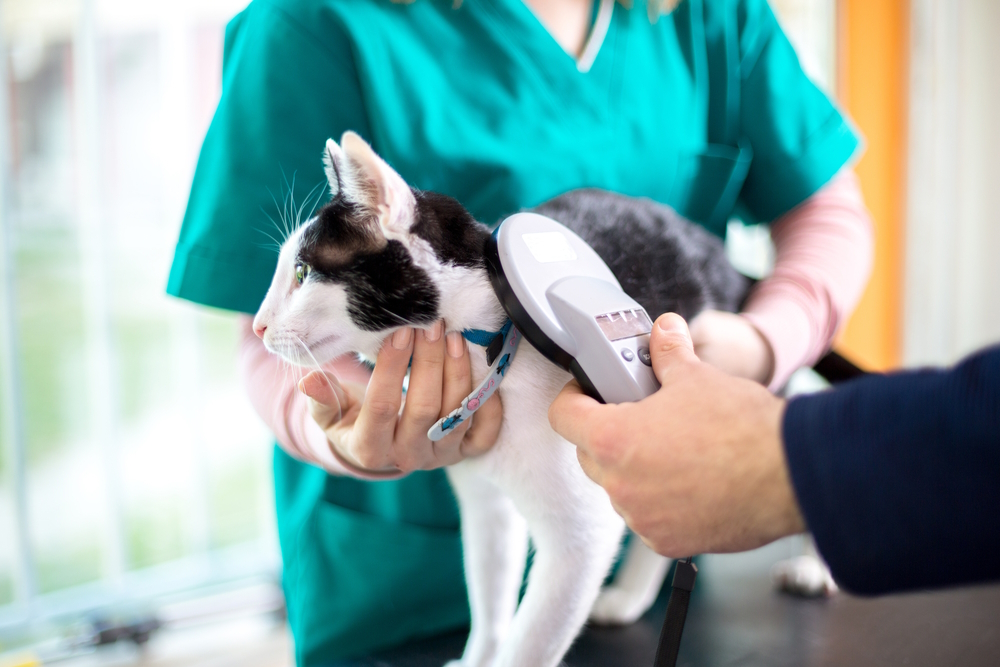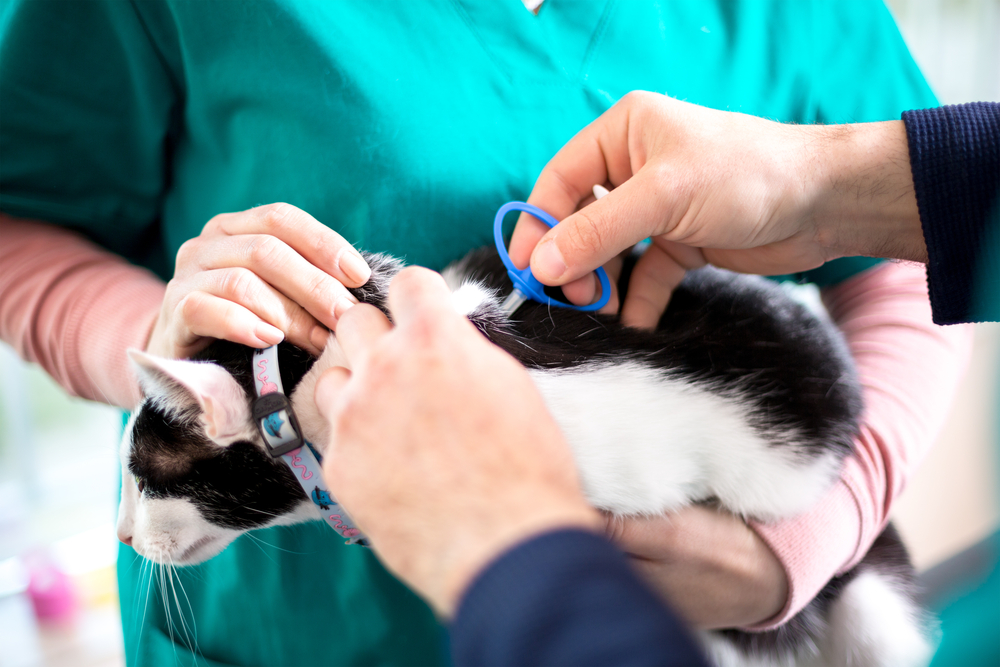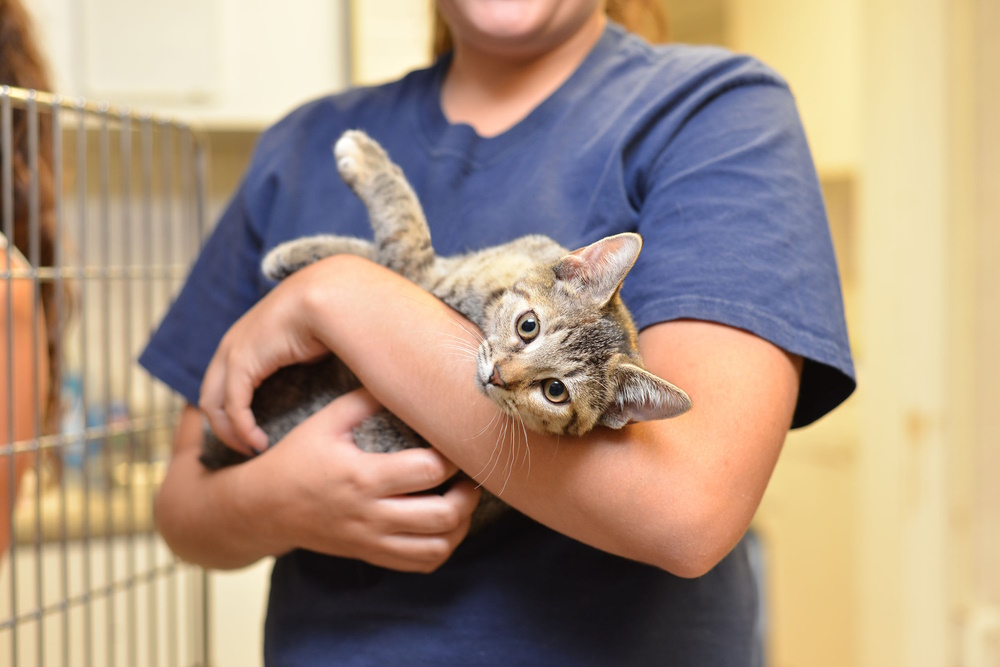Microchipping is a common practice for pets in the UK and it helps ensure that lost or stolen cats are reunited with their owners sooner. From June 2024, it will be legally required for all cats to be microchipped by the time they reach 20 weeks of age. Non-compliance can lead to fines of up to £500.
Some breeders may chip their cats prior to sale, but this is not always the case, and most new owners will choose to have their cats chipped when they are neutered because they will be under anesthesia. The procedure is minimally invasive, although it may cause some discomfort, and the chip should, except in very rare circumstances, last the cat’s life.


The Importance of Microchipping
A microchip is placed directly under the cat’s skin, usually between the shoulder blades. If the cat goes missing, a veterinarian, warden, or rescue center, can use a scanner to locate the chip and obtain a chip identifier. The chip details are registered in a central database and the person or group scanning the chip can find the owner’s contact details.
The main benefit of having a cat microchipped is that lost cats can be reunited with their owners. Rescues, shelters, and some other professionals have microchip scanners they can use to find owner details. In some cases, this means that owners who otherwise cannot be found can be reunited with their lost cats, as cats tend to wander long distances if they escape or wander from their homes.
This can greatly reduce the amount of time that families are separated from their pets, and it also means that rescues and shelters don’t have to care for cats for long periods of time.
From June 2024, it will be a legal requirement for all pet cats to be microchipped. A cat must be chipped by the time it is 20 weeks old, and if a cat is found not to be microchipped, its owners can be fined up to £500 when they are reunited with the cat.

How Much Does Cat Chipping Cost?
The cost of chipping varies depending on where you have it done, but it usually costs between £20 and £30. The cat does not need any anesthesia and does not need to stay at the vet, because the chip is applied by injecting it under the skin. Because of this, there are no other costs associated with the chipping procedure itself.
There may be small fees associated with updating the database of cat owner details, but these fees are usually only charged if you need to change owner details or address details. It is important that you keep those details up to date, however, including adding a recent phone number where you can be reached. The chip does not require removal and does not have to be replaced, so there are no recurring costs either.
Some rescues will microchip any cat they take in that is not already chipped. They do this because it helps control the number of stray, feral, and lost cats. In these cases, the cost of microchipping is included in the adoption fee you pay.
Breeders do not usually microchip their cats, although some may do so and, if your cat breeder microchips your cat, this will again be included in the fee you pay. Some animal charities and organizations may offer free chipping. Again, this is done in the hopes that it will help control the number of stray cats.
How Often Should You Groom a Cat?
A microchip does not require any power to operate, and the small device sits under the cat’s skin, which usually provides it with protection. The chip will last for decades before it stops working, which means it will last the life of your cat.
A cat only needs one microchip in its lifetime, which means you never have to do it again and you never have to pay a fee again.

Is Chipping Painful?
Cat chipping means injecting a small microchip under your cat’s skin. The needle is slightly wider than a standard syringe because it needs to hold and deliver the microchip. Because of this, it may cause some discomfort during the procedure, and there may be slight swelling and redness in the area after the chip is inserted.
However, this discomfort is temporary, and your cat should be fine after a minute or two. There are always some very small risks associated with injections, so it’s a good idea to keep an eye on your cat for a few hours after the procedure.
Where Does Your Cat Cut?
Although the procedure is simple, it requires inserting a microchip under your cat’s skin with a needle. The procedure is usually performed by your veterinarian, and many owners choose to do it when a young cat is neutered.
This way, the injection can be completed while the cat is under anesthesia, minimizing discomfort. Talk to your local vet about having your cat microchipped.
What If Your Cat Is Rehomed?
If you need to rehome your cat in the future, you will need to provide the new owner with the microchip details. This includes the chip ID and the name of the database where the cat is registered. The new owner will be able to communicate with the company and change the cat’s ownership details, but the process will be easier with your involvement.

What If You Move?
Similarly, if you move property or change your phone number, the database will need to be updated. It should always include up-to-date contact information so that a veterinarian or other professional who has scanned your cat can contact you as soon as possible.
There may be a small charge when you make changes to the cat’s details, but these should not be more than a few pounds, and some companies do not charge any.
Does Pet Insurance Cover Chipping?
Pet insurance usually does not cover chipping, although it can be considered a useful extra included in some policies. Insurance is typically used to pay for unexpected veterinary bills and recovery for cats that get sick or involved in accidents, and not for preventative or care requirements.


Conclusion
It is a legal requirement that all domestic cats in the UK are microchipped, and the procedure has to be done by the time the cat is 20 weeks old. Failing to have the cat chipped can result in a fine of up to £500, but, worse, it can also mean you’ll never be reunited with your cat if it goes missing, or it will take longer to get them home. to you
The procedure is virtually painless, takes a few minutes, and only needs to be completed once in the cat’s lifetime. The cost is cheap, and while some companies charge a small fee to change phone and address details, this isn’t always the case, so it’s worth checking with the microchip database company you’re using.
Featured Image Credit: Ivonne Wierink, Shutterstock


